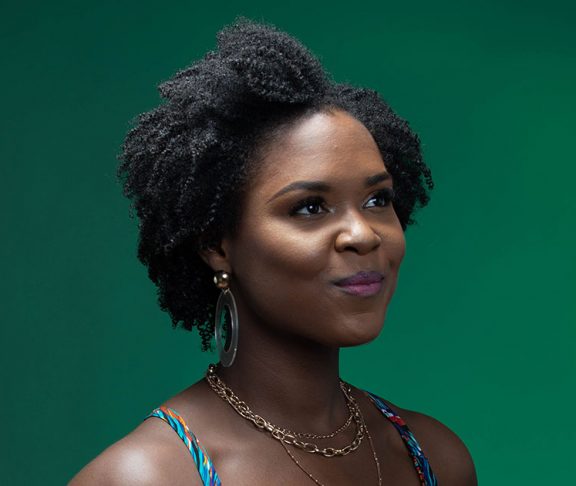Shanelle Gabriel has always been a hard worker focused on pursuing her dreams as an artist. So it’s no surprise that the spoken-word poet and singer tried to push through tiredness, stiffness, and body aches.
When Gabriel was in college, she always felt tired and would wake up feeling stiff. She dismissed it as general soreness from working out with her dance team.
Then she started getting bad headaches and having severe wrist pain. She remembers thinking, “I don’t have time to really be sick.”
The Brooklyn-native Gabriel, then 21, went to her doctor, who told her she probably had sinus problems and encouraged her to take allergy medicine.
Diagnosis
A turning point came a month later when she noticed patches of hair missing. She went to a different doctor who asked her a series of questions, including about how tired she was and whether her hands changed colors when they got cold. After testing, Gabriel was diagnosed with lupus, an autoimmune disease.
At the time, there weren’t medications specifically designed to treat lupus. Instead, doctors had a blanket approach and prescribed a variety of medicines, including steroids, to treat symptoms, but nothing was specific to the illness.

“Nobody knew how much pain I was in,” said Gabriel, now 36, who describes lupus as, “a hidden disease.”
Many of the medicines had side effects, including increased risk for liver and kidney problems, as well as cataracts and glaucoma.
She still had flare ups that sent her to the hospital, including an inflammation of the membrane around her heart. It was so bad, she had to leave an internship and quit the dance team.
After graduating, Gabriel toured the country as a poet and singer. While in Montana for a performance, she suffered an episode that caused her to be hospitalized due to a lupus-related condition that causes blood clots.”
Clinical trials
When her doctor suggested trying a clinical trial for a new lupus treatment, Gabriel, who’s African American, balked. She was worried because, historically, people of color have been taken advantage of during medical trials.
She later found out the trial was a success and her doctor prescribed the approved drug. The treatment worked but it was demanding, as Gabriel needed to take a full day off from work to receive IV therapy.
Next, Gabriel decided to participate in the next clinical trial, which tested that approved medicine as a self-administered, weekly therapy.
For Gabriel, this drug helped make her symptoms more manageable allowing her to discontinue her use of steroids.
Stigma
While Gabriel was initially nervous about clinical trials, she’s glad she talked with her doctor and other medical professionals, and realized that clinical trials are essential for finding new therapies and cures.

“Due to a lack of participation by women of color in a lot of these trials, (researchers) were not able to actually track if it worked for us,” she said. “There’s only one way to find out if it works; somebody has to do it.
“I just felt like, ‘You know what? I’m fine with that, because there could be a really great benefit from it.’ And I did end up benefiting from it.”
Gabriel is on the patient advisory boards for The Center for Information and Study on Clinical Research Participation, a non-profit dedicated to educating and engaging the public and patients about clinical research.
She encourages patients with lupus and other diseases to consider clinical trials, which have many safeguards to minimize danger for participants. She recommends doing your own research, asking questions, and talking to your doctor about clinical trials.
She’s sharing her story and hopes to inspire others.
“It’s becoming a community of people that are advocating and I think there is hope for a cure,” Gabriel said.
To learn more about lupus, please visit Lupus Research Alliance at https://www.lupusresearch.org/

